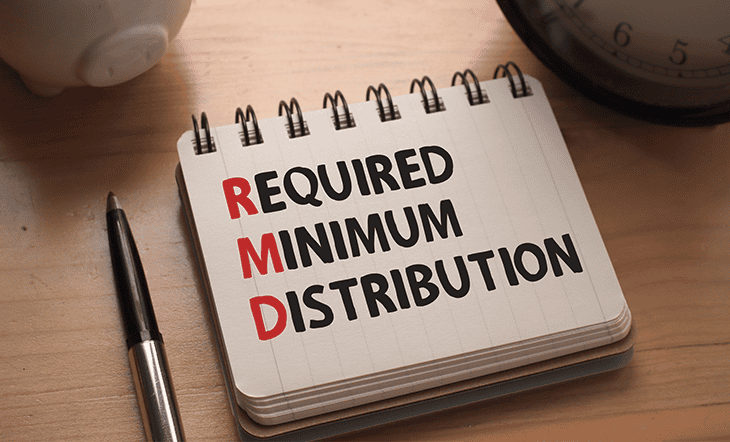Home > Personal Finance > How to Plan Your Taxes if You’re a High-Net-Worth-Individual
How to Plan Your Taxes if You’re a High-Net-Worth-Individual
The broad scope of tax legislation that has become law over the past several years has prompted many higher-income taxpayers to take a closer look at their tax situation. With the legislation tipping towards taxing the wealthy even more, the time is ripe right now than ever before for investors to introspect and put in place tax-efficient strategies to strike a balance between protecting their wealth and seeking capital appreciation over time. Since some tax changes are permanent and some are temporary, it continues to be important that investors remain focused on their long-term objectives. Meeting with your financial advisor to develop and manage an asset allocation strategy that will help you work toward your goals is a great approach towards wealth management. Keep in close touch with your fiduciary financial advisor to stay abreast of the latest tax provisions. As you evaluate making adjustments to your investment portfolio based on tax considerations, be mindful of how much money you will keep versus what you will pay in taxes. Especially for high-net-worth-individuals, it may be challenging to keep your income below the thresholds to qualify for tax benefits. Some common tax planning considerations include the timing of income and deductions, as well as understanding the character of the income you receive.
Having a higher net worth affords you many benefits, but it also means tax planning is a bit more of a chore. Without a thoughtful tax strategy, you run the risk of missing out on key tax benefits and, when you’re paying more in taxes, that liability can begin to diminish your net worth over time. Fortunately, there are several opportunities for tax savings, including for earners in the higher tax brackets. This article looks at various ways in which high-net-worth-individuals may plan their taxes to minimize the outgo and protect their wealth in the long run.
Table of Contents
Who is a high-net-worth-individual?
A high-net-worth individual is a person who owns liquid assets valued at $1 million or more. There is no official or legal definition of HNWI, and the threshold for high-net-worth is generally understood to include liquid assets only—cash, money held in bank or brokerage accounts—excluding assets like a primary residence, collectibles, or durable goods. It is essentially money that you can quickly turn to cash for emergency use.
Financial professionals break down the category into three classifications of wealth:
- High net-worth individuals (HNWIs): People or households who own liquid assets valued between $1 million and $5 million.
- Very high net-worth individuals (VHNWIs): People or households who hold liquid assets valued between $5 million and $30 million.
- Ultra high net-worth individuals (UHNWIs): People or households who own more than $30 million in liquid assets.
Given their substantial assets, high net-worth households require additional services from financial advisors and wealth managers. Financial services for HNWIs include investment management and tax advice, as well as help with Financial Planning.
The need for tax-efficient financial planning
Whether you’re concerned about higher income tax brackets or the Medicare surtax, investing in certain assets that are tax-deferred can reduce your taxable income from investments and lower your current year tax liability. Tax-deferred are not the same as tax-exempt; that is, at some point in the future, tax-deferred investments will have some type of tax consequence associated with a sale or distribution of the assets. That’s why you’ll want to work closely with your tax advisor to project how withdrawals or sales of these assets may affect your future income tax liability.
Tax planning opportunities for high-net-worth-individuals
HNWIs need to seek realistic tax planning as well as follow a sensible investment plan to sustain their wealth. Let’s look at some of the current options to achieve this:
1. Max out your 401(k) contributions
Having a 401(k) account is one of the easiest ways to save for retirement. The money deposited in a 401(k) account is tax-deductible and grows tax-free – a factor that can play out well for high-net-worth-individuals. Besides being a great retirement planning tool, a 401(k) account allows for a hefty tax deduction in the income of the taxpayer. For high-net-worth-individuals, this solves two purposes: 1) it reduces your taxable income, and 2) the deducted contribution grows tax-free in your 401(k) account. Therefore, you get a retirement benefit and a tax benefit.
The IRS allows taxpayers to contribute a maximum of $19,500 each year and an extra $6,500 for those over the age of 50. With this limit, it may be a wise decision for high-net-worth-individuals to max out the contributions that can be made to a 401(k) account.
However, note that 401(k) may be a ticking time bomb. A 401(k) is a tax-deferred account and not a tax-free account. In this sense, maybe, it makes sense for you to roll over your savings in the 401(k) to a Roth IRA that takes in post-tax dollars and then makes withdrawals tax-free. Of course, this exercise should be undertaken while you still are in your earning years. Speak to your wealth manager or retirement planner about such options.
Should you roll over your 401(k) into an IRA? Read our article in the Paladin Registry blog.
2. Make maximum contributions to your Health Savings Account (HSA)
Just like 401(k) funds, the contributions made to a Health Savings Account (HSA) also grow tax-free and can be used for medical expenses in your lifetime. The money continues to grow over the years and offers triple benefits to the account holder: HSAs allow for pre-tax contributions, there is no taxation upon withdrawing the money, and it acts as an investment instrument to cover your medical expenses in the future.
Until 2021, the IRS allowed taxpayers to make a maximum contribution of $3,600 per year for self-care and $7,200 for the family. In 2022, the IRS raised the limit to $3,650 for self-care and $7,300 for families. Those above the age of 55 can contribute an extra $1,000 to the HSA.
Make maximum contributions to your HSA as the tax benefits for an HSA are more than the tax benefits for an IRA or a 401(k) account.
3. Explore investment tax planning opportunities
Investments can generate wealth in the long term; however, selling investments can generate capital gains tax. With President Biden reportedly proposing to raise taxes on long-term capital gains for individuals earning $1 million or more to 39.6%, investment tax planning takes center stage now. Added to the existing 3.8% investment surtax on higher-income investors, the tax could rise to 43.4%, excluding state taxes.
There are two types of capital gains tax – short term and long term. Short-term capital gains tax rates are applied to equity investments held for less than one year, while long-term rates are applied to equity investments held for more than a year. Short-term capital gains tax is the same as an ordinary income tax rate, while long-term rates are taxed at either 0%, 15%, or 20%, based on your taxable income level.
HNWIs belong to the highest tax bracket; they have to pay more in short-term capital gains than in long-term capital gains. So, it serves them to consider their holding period and the tax rate they will apply before selling off any investments in their portfolio. If HNWIs would like to work toward eliminating a capital gains tax bite, they may consider using a tax-loss harvesting strategy. It’s a way to offset profits by also selling some of their investments at a loss.
4. Consider estate and gift tax planning
After the Tax Cuts and Jobs Act (TCJA), the gift, estate, and generation-skipping transfer tax (GSTT) exemptions doubled from 2017. The tax rate for all three remains at 40%, but the increased exemptions for 2021 offer significant opportunities. For example, the current estate tax exemption is $11.7 million per person (against $11.58 in 2020), and the annual exclusion limit for the gift tax is $15,000 per person.
Higher lifetime exemptions offer you a greater opportunity to leave behind wealth for your children and grandchildren and minimize taxation during your lifetime. To fully leverage these benefits, you’ll need to consider whether your estate plan is structured in such a way as to take advantage of the higher estate tax limit. You’ll also want to ensure you won’t be passing on more or less of your wealth to your heirs than you intend to while you’re alive.
The increase in the estate tax exemption is currently set to expire at the end of 2025. If there are no changes to the existing law between now and 2025, the exemption will drop back to what it was before the TCJA, which was $5 million. When adjusted for inflation, the exemption will be somewhere between $5.4 and $6 million. This severely restricts the amount you can gift to your heirs to pass on your wealth or estate without tax implications. According to news reports, some in Congress and the Biden administration are keen to bring down this level earlier than 2025.
What’s more, under current law, investment assets held at death aren’t subject to capital gains tax. This is known as the “step-up in basis.” The Biden administration is also looking to limit this benefit.
In this purview, now may be a great time to reach out to your investment manager or wealth advisor to create a comprehensive plan to help you tide through the expectant tax changes without a significant impact on your wealth.
5. Make use of charitable giving tax planning opportunities
If you want to do good while also enjoying a tax break, charitable giving can be an attractive strategy for high-net-worth individuals. The IRS allows you to deduct cash contributions to eligible charitable entities, with a maximum deduction of 60% of your adjusted gross income (AGI). With the passage of the Consolidated Appropriations Act (CAA), for 2021, the maximum deduction for qualifying cash contributions is up to 100% of AGI.
If you are a high net-worth individual and you itemize your deductions, these higher limits on charitable deductions can be quite meaningful to your tax planning. Consider, for example, that you could make a large, tax-free transfer of wealth by putting some assets into a charitable lead annuity trust.
If you’re over age 70½ , you can also take advantage of an additional benefit. You can avoid paying income tax on up to $100,000 annually by making qualified charitable contributions (QCD) from a traditional IRA. For individuals that are already taking required minimum distributions (RMDs) from their traditional IRAs, amounts distributed as a QCD will be counted towards satisfying your RMD for the year, up to the $100,000 maximum.
For Individuals with highly appreciated stocks, you may want to consider opening a donor-advised fund (DAF). If you are eligible to claim itemized deductions for federal and/or state income purposes, contributions to the DAF are considered tax-deductible charitable contributions. Transferring shares to a DAF allows you to receive a tax deduction in the year you transfer the stock, but you can make grants to your preferred charitable organizations at any point in the future.
6. Explore pass-through entity income deduction opportunities
The final tax opportunity we encourage high-net-worth individuals to consider relates to the 20% deduction on business income for pass-through entities. A pass-through entity (also known as a flow-through entity) is a business structure in which the business income is treated as the personal income of the owners. Specifically, it means that you may be able to deduct 20% of your qualified business income off the top of your earnings (with certain limitations). If you’re a high-income earner and you own a business, you may find advantages in forming an LLC to take advantage of this significant deduction.
To conclude
Generally speaking, the investment industry quotes returns and yields without including their client’s various tax situations. Especially as high-net-worth-individuals, you and your advisors not only need to be aware but also be proactive in managing your tax liability. This means being strategic about the particular asset classes and investment products you use as well as opportunistically capturing losses to offset gains.
With all the intricacies of the US tax code and penalties for underreporting income or claiming excessive tax deductions, it is important to work with a trusted tax professional. As you do, be sure to discuss the four topics explored in this article: investment tax planning, estate, and gift tax planning, charitable tax planning, and pass-through entity deduction planning. Doing so will ensure you can create the best tax planning strategy for your circumstances while also ensuring you remain on the right side of the IRS.
Visit Paladin Registry to find experienced and certified financial fiduciaries suited to your financial requirements. The free match tool connects you with 1-3 financial advisors that may be able to help you with your financial goals and needs.
To learn more about the most suitable tax-saving strategies for your specific financial requirements, visit Dash Investments or email me directly at dash@dashinvestments.com.
About Dash Investments
Dash Investments is privately owned by Jonathan Dash and is an independent investment advisory firm, managing private client accounts for individuals and families across America. As a Registered Investment Advisor (RIA) firm with the SEC, they are fiduciaries who put clients’ interests ahead of everything else.
Dash Investments offers a full range of investment advisory and financial services, which are tailored to each client’s unique needs providing institutional-caliber money management services that are based upon a solid, proven research approach. Additionally, each client receives comprehensive financial planning to ensure they are moving toward their financial goals. CEO & Chief Investment Officer Jonathan Dash has been covered in major business publications such as Barron’s, The Wall Street Journal, and The New York Times as a leader in the investment industry with a track record of creating value for his firm’s clients.
Other posts from Jonathan Dash
Here’s Why Every Tax Season is a Good Time to Revisit Your Financial Investments
The tax season is the perfect time to take a closer look at your financial investments. The 2025...
3 Key Financial Habits That Set Wealthy Retirees Apart
The wealthy may seem to have it all figured out, but their success is the result of years...
Things You Should Know About RMDs if You Are Turning 73
Retirement accounts like the 401(k) and the Individual Retirement Account (IRA) are broadly classified as traditional, and Roth based on their taxability....




